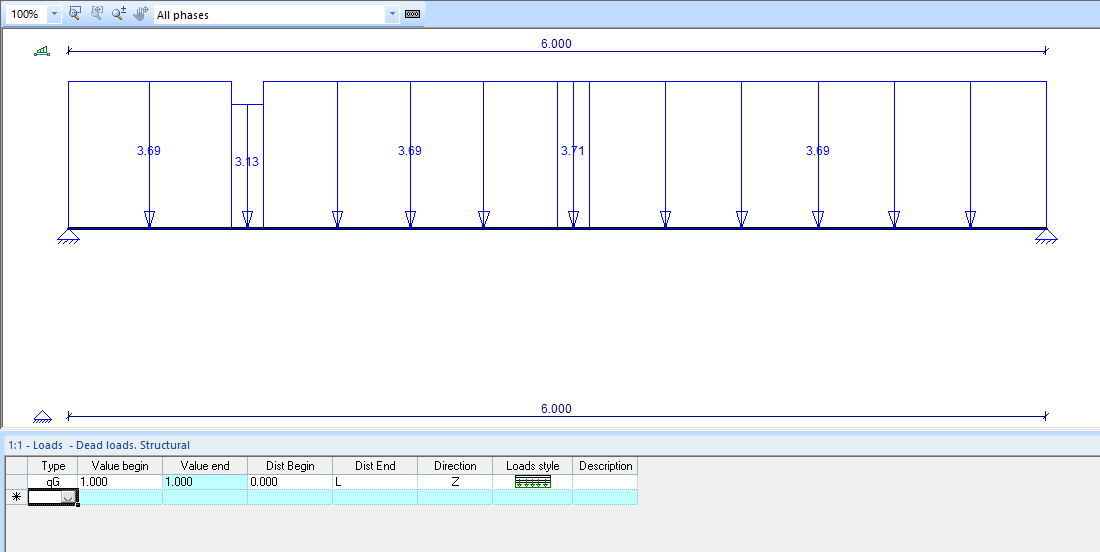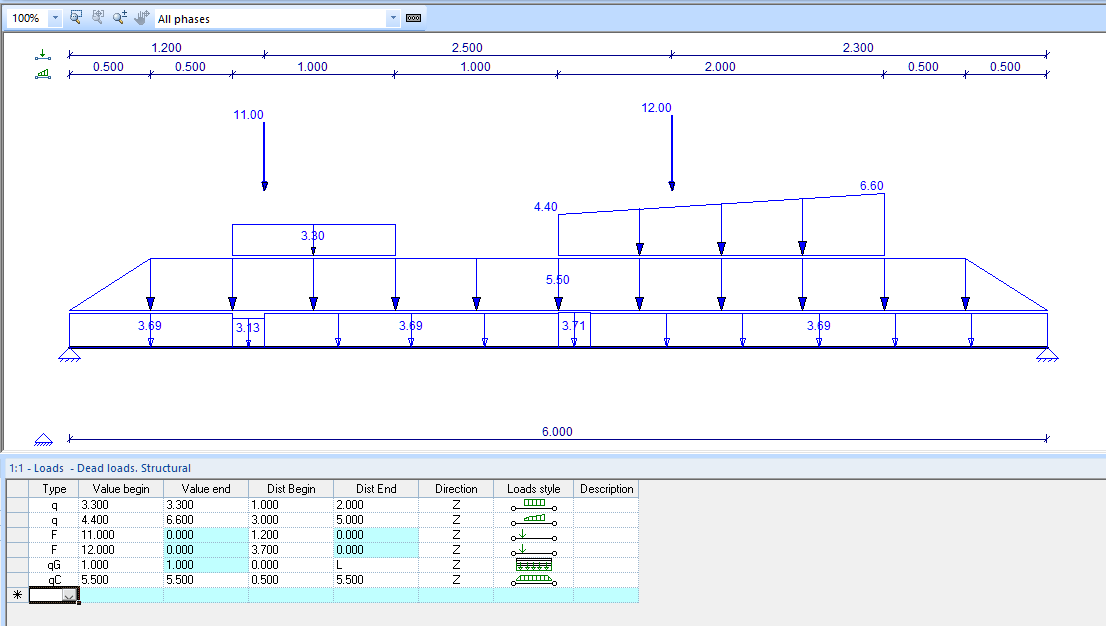Loads

- Type:
- q: uniform or gradient line load.
- qC: trapezoidal load.
- qG: uniform line load for the Self Weight.
- qT: uniform line load due to the Temperature.
- F: concentrated point load.
- Start and end value: the start and end value of the line load [kN]. In the case of a concentrated load, only the first value is relevant.
- Start and end distance: the start and end position of the line load [m]. In the case of a concentrated load, only the first value is relevant.
- Direction: Loads can act in the Z or X direction. Point loads (F) can also act in the Yr as a moment at a distance.
- Load type: schematic representation of the load type.
- Description: free text field for a comment.
- B.G.1 to B.G.x: Loads are grouped into Load cases. Each BG has its own tab.
Example:

- q: an uniform line load with an initial value of 3.30 kN/m1 and an end value of 3.30 kN/m1, operating from 1.00 meters to 2.00 meters, measured from the start of the beam.
- q: a tapered line load with an initial value of 4.40 kN/m1 and an end value of 6.60 kN/m1, operating from 3.00 meters to 5.00 meters, measured from the start of the beam.
- F: a concentrated load (point load) with a value of 11.00 kN at a distance of 1.20 meters, measured from the start of the beam.
- F: a concentrated load (point load) with a value of 12.00 kN at a distance of 3.70 meters, measured from the start of the beam.
- qG: the dead weight based on the choice of profile cross-section and material, multiplied by a factor of 1, working from distance 0 to L, the length of the beam.
- qC: an uniform trapezoidal load with a value of 5.50 kN/m1 to 5.50 kN/m1, operating from 0 to L, with the buckling points of the trapezoidal shape at 0.50 and 5.50 meters.
For more information, see also: "Relational objects"